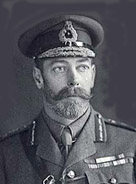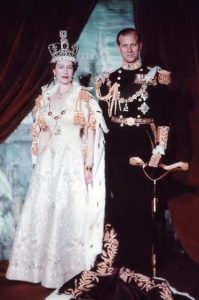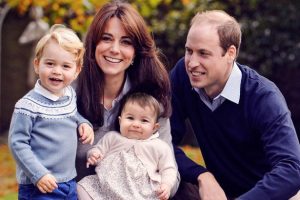 Wars always bring changes…especially in how nations feel about other nations. Sometimes, the whole world seems to be against one nation that has proven itself to be particularly evil. Germany was one of those nations that the entire world was against during World War I, as well as during World War II. It was during World War I that Britain’s King George V was quite concerned about the anti-German sentiment that existed in the world and in Britain. His family was of German descent, and the family name was very much a German name…Saxe-Coburg-Gotha, to be exact.
Wars always bring changes…especially in how nations feel about other nations. Sometimes, the whole world seems to be against one nation that has proven itself to be particularly evil. Germany was one of those nations that the entire world was against during World War I, as well as during World War II. It was during World War I that Britain’s King George V was quite concerned about the anti-German sentiment that existed in the world and in Britain. His family was of German descent, and the family name was very much a German name…Saxe-Coburg-Gotha, to be exact.
George was born on June 3, 1865, the second son of Prince Edward of Wales, who later became King Edward VII and Alexandra of Denmark, and the grandson of Queen Victoria. He embarked on a naval career before becoming heir to the throne in 1892 when his older brother, Edward, died of pneumonia. The following year, George married the German princess Mary of Teck, who was his cousin, a granddaughter of King George III, and who had previously been intended for Edward. The couple had six children, including the future Edward  VIII and George VI, who took the throne in 1936 after his brother abdicated to marry the American divorcee Wallis Simpson. As the new Duke of York, George had to abandon his career in the navy. He became a member of the House of Lords and received a political education. When his father died in 1910, George ascended to the British throne as King George V.
VIII and George VI, who took the throne in 1936 after his brother abdicated to marry the American divorcee Wallis Simpson. As the new Duke of York, George had to abandon his career in the navy. He became a member of the House of Lords and received a political education. When his father died in 1910, George ascended to the British throne as King George V.
With the outbreak of World War I in the summer of 1914, strong anti-German feeling within Britain caused sensitivity among the royal family about its German roots. Kaiser Wilhelm II of Germany, also a grandson of Queen Victoria, was the king’s cousin; the queen herself was German. Public respect for the king increased during World War One, when he made many visits to the front line, hospitals, factories and dockyards. Still, because of anti-German feeling George V felt led to adopt the family name of Windsor, so on June 19, 1917, the king decreed that the royal surname was thereby changed from Saxe-Coburg-Gotha to Windsor, which it has remain since that day.
After the World War II, the current Prince Philip was granted permission by King George VI to marry the future Queen Elizabeth. Before the official announcement of their engagement, Philip abandoned his Greek and Danish royal titles and became a naturalized British subject, adopting the surname Mountbatten from his maternal grandparents. After an engagement of five months, he married Elizabeth on November 20, 1947. Just before  the wedding, Philip was made the Duke of Edinburgh. He left active military service when Elizabeth became monarch in 1952, having reached the rank of commander. He was formally made a British prince in 1957. Mountbatten-Windsor is the personal surname used by the male-line descendants of Queen Elizabeth II and Prince Philip, Duke of Edinburgh. Under a declaration made in Privy Council in 1960, the name Mountbatten-Windsor applies to male-line descendants of the Queen without royal styles and titles. Individuals with royal styles do not usually use a surname, but some descendants of the Queen with royal styles have used Mountbatten-Windsor when a surname was required.
the wedding, Philip was made the Duke of Edinburgh. He left active military service when Elizabeth became monarch in 1952, having reached the rank of commander. He was formally made a British prince in 1957. Mountbatten-Windsor is the personal surname used by the male-line descendants of Queen Elizabeth II and Prince Philip, Duke of Edinburgh. Under a declaration made in Privy Council in 1960, the name Mountbatten-Windsor applies to male-line descendants of the Queen without royal styles and titles. Individuals with royal styles do not usually use a surname, but some descendants of the Queen with royal styles have used Mountbatten-Windsor when a surname was required.


Leave a Reply